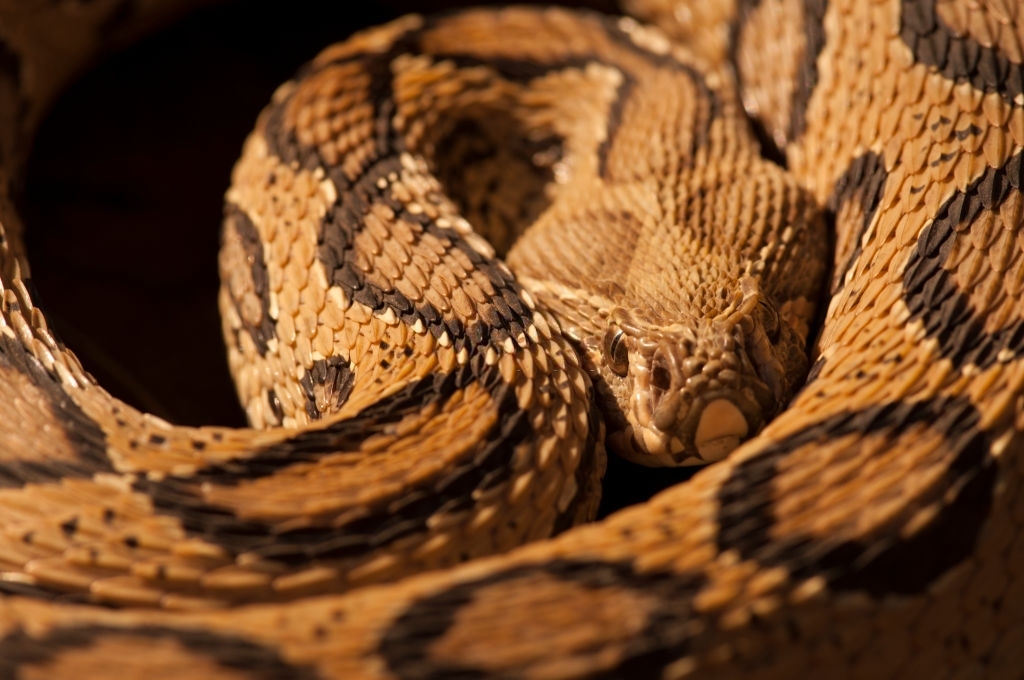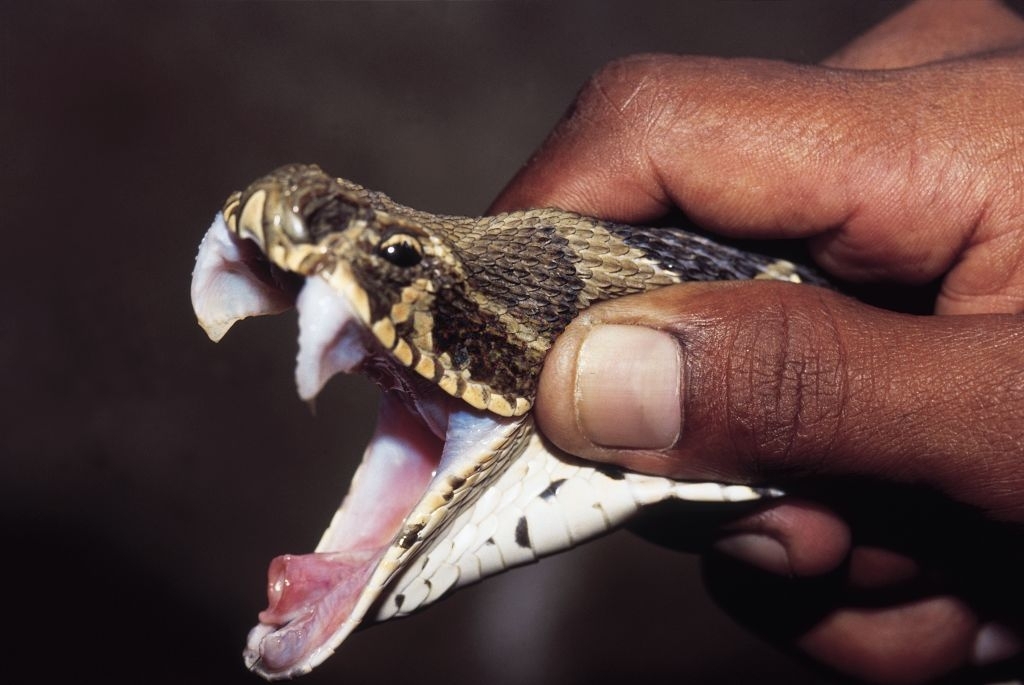Russell’s Viper තිත් පොළඟා (Daboia russelii-Shaw & Nodder, 1797)

Russell’s Viper belongs to the subfamily Viperidae, which is considered to be true vipers. Among the species of snakes living in Sri Lanka, most deadly due to snake bites of Russell’s Viper. Russell’s Viper is common in all climates except the high mountains, which have a very cold climate, up to 1500m above sea level to the central highlands.
The tail of this snake is very short and small compared to the body size. The abdomen is white or yellowish-white. The body comes in a range of colors from light yellow to brown. The main feature of this snake is its brown spots that extend from the head to the end of the tail. In some animals, these spots are intertwined in the shape of a chain. These spots are bilateral on the body but relatively small in size. The dotted border has a black border and another fine white border around the border, which gives it a beautiful color and dotted pattern. There is a triangular flat head clearly separated from the neck. There is a white “V” shaped white mark on the front of the head, which is in dorsal. This mark is also a factor that can be used to identify this species of snake. Another distinguishing feature of the head is the two large brown spots that touch the aforementioned V-shaped mark to the head. Like other snakes in the Daboia genus, Russell’s Viper has very large nostrils. The eye with a vertical cannula is a feature that shows its nocturnal behavior.
View this post on Instagram
It is a common snake in agricultural lands due to its abundance of food sources. The Russell’s Viper, which adapts its body color to match the environment, is a predatory predator (Ambush Predator) among the dry decaying leaf litter. Although primarily a nocturnal snake, it can be seen during the daytime.active during the evening and at night, although he travels quite lazily during the day. Quickly agitated, Russell’s Viper, tries to attack as soon as he feels threatened. When threatened, they form a series of S-loops, raise the first third of the body, and produce a hiss that is supposedly louder than that of any other snake. When its predator or prey reaches the point where it can bite, it releases its head like a bow and strikes. This is why some people say Russell’s Viper jump and attack constantly. This is not just vipers. It is a precautionary measure taken by many non-venomous snakes.

Russell’s Viper, which shows ovulation during reproduction, gives birth to between 5-50 younger ones at a time. At birth, Russell’s Viper is about 20cm long and the adult is about 130-180cm long. They feed on small mammals such as rats as their main food. In addition, frogs, frogs, and birds have been reported to have eaten.
Russell’s Vipers venom is a major toxin that mainly damages the circulatory system, as well as neurotoxins and toxins that can damage the kidneys. frequently encounter with human habitats and farmland.symptoms include excessive bleeding from the mouth and swelling of the mouth. Symptoms include internal bleeding, bleeding from the eyes, nose, gums, genitals, kidney failure, and vomiting.toxins activate blood clotting factors, and fibrinogen, a blood-clotting protein, is depleted during continuous blood clotting. As a result, blood vessels rupture and bleed from the above areas of the body (Venom Induced Consumptive Coagulopathy). Tissue necrosis is also caused by the bite of this snake. The lethal dose for humans is 40-70mg, while an adult can ingest between 130-250mg of venom per bite. If the patient does not receive proper medical treatment after a bite, the risk of death is very high.







